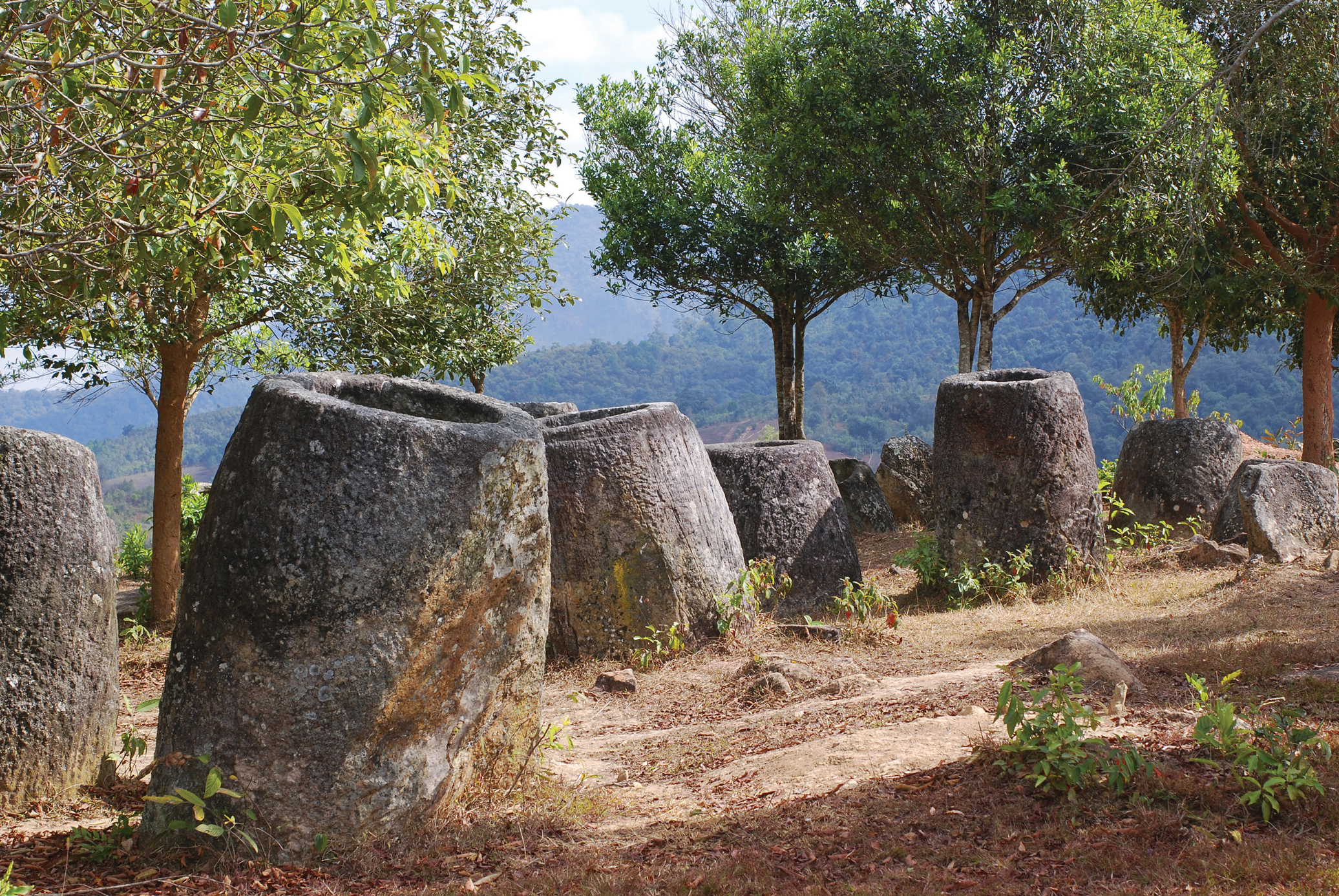
Phonsavan
Prehistoric burial sites, rainwater reservoirs, or bottles used by the giant king Khun Cheung to brew rice wine? The 2,500 stone jars of remote Phonsavan are one of the world’s great archaeological mysteries.
The province of Xieng Khouang is a long way from anywhere. This is the roof of Laos – with the country’s highest mountain rising to 2,820 metres at the southern edge of a great plateau. Compared with the jagged karst peaks and steep-sided, jungle-clad mountains in other parts of the country, this is a much softer landscape – characterised by open skies, gently rolling hills, and grassland studded with trees.
Just to look at it, you’d never guess that this was once the most heavily bombed place on Earth – but between 1964 and 1973, the USA dropped two million tons of ordnance here: more than they did in the whole of WWII. Once you know the history, you’ll begin to see the craters, trenches and fox holes everywhere – and as you pass through local villages, you’ll spot old shell casings being repurposed for use as flowerpots, barbecues and even cutlery.
The main reason people visit Xieng Khouang today is the Plain of Jars – an archaeological site whose origins are shrouded in mystery. With more than 90 different sites on the Xieng Khouang Plateau, it’s an archaeological marvel: thousands of huge, stone jars left scattered over hundreds of square kilometres. Thought to have been left here during the Southeast Asian Iron Age (between 500 BC and 200 AD), their original purpose is a mystery. Most believe that they were part of prehistoric burial practices, but local legends offer other theories – that the jars were used to gather monsoon rainwater, or that they were used by a race of giants to brew rice wine. Whatever the explanation, it’s a compelling riddle to contemplate – and a beautiful setting in which to do so.

